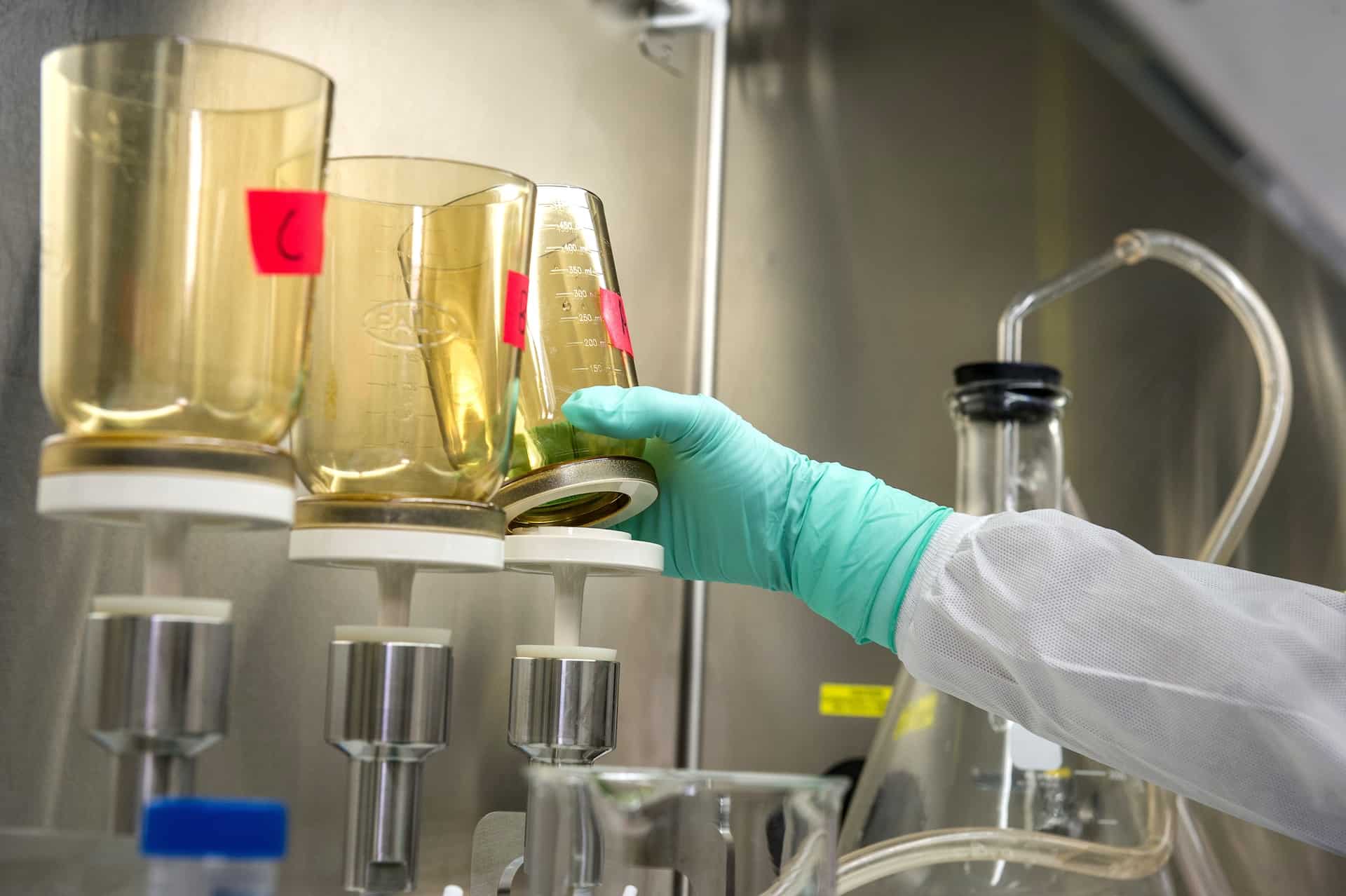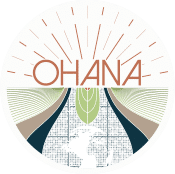
The EU’s Sustainable Chemicals Strategy: A Primer for Textile Companies
The EU has some of the strictest regulations in the world governing industry use of chemicals. But it’s still not enough to ensure that the chemicals used in manufacturing, packaging, and commercialising products are safe and sustainable.
To fulfil the ambition of the European Green Deal, and meet climate goals like zero pollution by 2050, stricter and more comprehensive guidelines are required.
Enter : the EU’s Chemicals Strategy for Sustainability which will radically change legislation around the chemicals companies can use and the information they must provide about chemicals in their products. Big changes are coming and companies will need to ensure their use of chemicals is safe and sustainable by design and consider how chemicals play into circular business models like secondary raw materials use.
This article gets you up to speed on what to expect from the EU’s Chemicals Strategy and how it will affect textile companies. We’ll tell you everything you need to know to get prepared for the changes – and, importantly, to engage with upcoming chemicals legislation before it’s finalised. By getting your voice heard, you can help the EU provide the policy support and investments companies need to implement truly safe, sustainable chemical use.
Want someone with deep experience and connections to help guide your engagement with EU sustainability policy? Get in touch!
How the chemicals strategy affects textile companies
Downstream users
Chemicals regulations don’t only affect direct manufacturers like the chemicals industry. Textile companies are considered to be “downstream users” since they don’t produce chemicals but do use them in their industrial and commercial activities.
Chemicals are used by the clothing industry in fabric dyes, washes for raw fibres and fabric treatments, like those used to provide garments wrinkle resistance or make sportswear antibacterial. Even the pesticides used to grow raw materials like cotton are considered chemicals.
Existing legislation considers downstream users like the textiles industry to have responsibilities to use chemicals safely and sustainably. The new chemicals strategy will increase these obligations, meaning textile companies should start considering ways to phase out unsustainable chemicals, increase chemicals traceability, and implement safe and sustainable-by-design principles. The strategy names textiles as one of the priority industries for minimizing substances of concern in order to increase circularity.
Responding to market concerns
There’s another way in which guidelines around chemicals use affects textile companies: their customers. According to EU research, 84% of Europeans are concerned about the health impact of chemicals present in everyday products, and 90% are worried about how chemicals affect the environment.
Textile companies who move to sustainable, toxic-free methods will get ahead of the curve and build credibility within a market increasingly concerned about the impact of chemicals.
The chemicals strategy landscape
The European Green Deal
The new chemicals strategy is part of the European Green Deal. The European Green Deal sets forth ambitious policies and initiatives designed to transform the EU into a safe, sustainable, resource-efficient, and competitive economy.
The chemicals strategy for sustainability
The EU’s chemicals strategy for sustainability has two main objectives:
- Developing policies that better protect citizens and the environment
- Supporting and investing in innovation for safer, more sustainable chemicals
The strategy aims to create a toxic-free environment where chemicals are used and produced in a way that avoids harm to the planet and to current and future generations. The EU’s vision is to maximize the safe contribution chemicals can make to society, including helping to achieve the green and digital transition.
The sustainable chemicals strategy was proposed by the EU Commission in 2020 and has now been endorsed by the European Council.
Review of REACH and CLP regulations
Part of the sustainable chemicals strategy involves reviewing two key pieces of legislation on the safe use of chemicals:
- REACH: The Regulation on Registration, Evaluation, Authorisation, and Restriction of Chemicals
- CLP: The Regulation on the Classification, Labelling, and Packing of hazardous substances.
The EU will tighten up both of these regulations, further restricting the use of potentially dangerous chemicals, including mixtures of chemicals. They will increase companies’ obligations to phase out dangerous chemicals and provide detailed information on the chemicals used to manufacture their products.
A feedback consultation period is currently open from 9 August-15 November 2021 for the revision of CLP regulation. Companies should take the opportunity to have their say before the legislative review is presented by the EU Commission.
In early 2022, a public consultation will open for the revision of REACH regulation, and Commission adoption is planned for the fourth quarter of 2022.
SPI and Sustainable Textiles Strategy
Several other key EU policies include revisions of chemicals for the textiles industry.
The Circular Economy Action Plan and Sustainable Products Initiative (SPI) both highlight the need for chemicals used to make products to be safe and sustainable by design.
The EU Commission will release the SPI in December 2021, and it will then go to Council and Parliament for approval. Stakeholders should prepare to engage with the Council and Parliament to get their voice heard on the final legislation.
The EU’s Sustainable Textiles Strategy will address chemicals in textiles that hamper recyclability, and the EU’s new green claims legislation will mandate increased transparency on the climate impact of products, including chemicals use.
The Sustainable Textiles Strategy will be released by end 2021. but there’s still time for organizations to influence the final strategy by participating in workshops and conversations with Council and Parliament who will propose amendments and approve the strategy in 2022.
The EU’s sustainable chemicals strategy: 5 key points
All of these different chemicals policies can create confusion around what’s actually being discussed and what’s going to change.
Here’s our breakdown of five key points in the EU’s strategy on chemicals:
1. New hazard classes
Revisions to the CLP and REACH will propose new criteria for chemicals to be considered hazardous and create new hazard classes based on the persistence, toxicity, and bioaccumulation of chemicals.
The new chemicals strategy will ensure that consumer products – including textiles – do not contain hazardous chemicals, in particular endocrine-disrupting chemicals (EDCs) or chemicals that cause cancers. An additional class of hazardous chemicals will deal with chemicals that affect the immune, neurological, or respiratory systems.
We can also expect a particular focus on restricting hazardous chemicals in products for children, including children’s apparel.
2. Chemical cocktails
The chemicals strategy plans to specifically “account for the cocktail effect of chemicals when assessing risks” on individuals and the environment. Exposure to a mixture of chemicals, either within the same products or from different sources, may create different health risks as chemicals have different effects in combination. In the new strategy, the EU will introduce provisions that take account of these combination effects in products and materials, including cosmetics, toys, and water.
3. Phasing out PFAS
Per- and polyfluoroalkyl substances (PFAS) are a group of human-produced chemicals that can cause adverse health effects and are detrimental to the environment. They are known as “forever chemicals” because they are persistent: they can remain in nature for hundreds or thousands of years.
Four EU member states (Germany, Denmark, Sweden, and the Netherlands), together with Norway, have come together to create a PFAS restriction proposal which they will present to the European Chemicals Industry (ECHA) by July 2022.
They are currently seeking stakeholder input on their proposal: have your say by contributing to their latest public consultation, open until 17 October 2021.
Under the EU’s chemicals strategy, most companies will need to phase out any processes that use PFAS and seek substitutes.
The strategy will treat PFAS together as a group and prohibit their use unless they are considered “essential” for health, safety, and social functioning.
Which brings us to…
4. Definition of essential use
There is an ongoing debate around when chemicals should be defined as “essential” for society. Upcoming legislation will need to provide a clear, uniform definition of what constitutes “essential use” of PFAS and other harmful substances.
The European Chemical Industry Council (CEFIC) has called for a publicly accountable Essential Use Committee, made up of representatives from the EU bodies, industry, and civil society, to decide which uses of PFAS and other substances are essential.
5. Safe and sustainable-by-design and recyclability
It has become clear that restricting harmful chemicals is not enough for safety and sustainability. In order to move towards a clean, circular economy, chemicals will need to be safe and sustainable-by-design.
The upcoming strategy will define safe and sustainable-by-design criteria for chemicals. The EU has also committed to investing in technology and infrastructure to find alternative chemicals that can replace chemicals of concern, including sustainable bio-based chemicals. By 2023, an EU-wide safe and sustainable-by-design support network will be established.
Companies should expect an emphasis on safe and sustainable-by-design chemicals that allow for recyclability. The EU has underscored the need for sustainable design to enable the uptake of secondary raw materials and increase the safety of recycled products.
The Sustainable Textiles Strategy will specifically address chemicals hampering recyclability to support the transition towards circular business models.
Engaging with the EU’s chemicals strategy
Over the next few years, textiles organizations should gear up for major changes in how they use and communicate about chemicals. These changes will help create a toxic-free clothing industry and a clean, circular economy – and they’re an opportunity to build trust with consumers who want safe, sustainable products.
But businesses will need support to move towards safe, sustainable-by-design chemicals and phase out dangerous chemicals like PFAS. (Remember, Ohana can help with your sustainability strategy!)
It’s crucial that companies engage with the EU and get involved with upcoming chemicals policy. Stakeholders of all sizes should engage – take a look at our interview with Sympatex for inspiration on how small textiles players can get their voices heard in Brussels.
Throughout 2021 and 2022, textiles stakeholders will have a chance to influence many of the key chemicals initiatives. Here’s a quick recap:
- Share your input on the PFAS restriction proposal put forth by member states for presentation to ECHA by participating in the consultation which closes on 17 October 2021.
- Give feedback on the current consultation on the revision of CLP regulation until 15 November 2021.
- Get ready for the REACH revisions public consultation, which opens in early 2022.
- The Sustainable Textiles Strategy will be released in Q3 2021 and the Sustainable Products Initiative in December. Companies can engage with the EU Parliament and Council on the final strategies in late 2021 and throughout 2022.
By telling the EU where they need support or investment, and advocating for clear, uniform policy, organizations can contribute to a successful transition to safe, sustainable chemicals.
Want someone with deep experience and connections to help guide your engagement with EU sustainability policy? Get in touch!
Join our newsletter to keep up to date with the latest news and information coming out of the EU.




